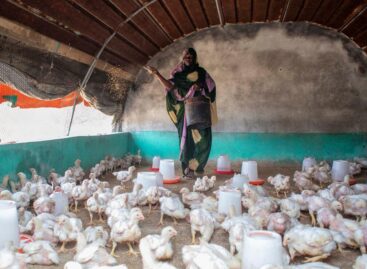FAO: October rise for global food prices
Global food prices rose in October for the first time in five months, as international quotations for sugar and key cereals increased significantly, according to the Food and Agriculture Organization of the United Nations (FAO).
The FAO Food Price Index, averaged 172.7 points in October, some 1.7 percent higher than the previous month and 6.0 percent higher than during October 2018.
The measure, which tracks monthly changes in the international prices of commonly traded food commodities, was released today by FAO.
The FAO Cereal Price Index rose by 4.2 percent during the month, as wheat and maize export prices moved up sharply on the back of reduced crop prospects in several major producing countries and robust trade activity. By contrast, rice prices slipped, driven by subdued demand and prospects of an abundant basmati harvest.
The FAO Sugar Price Index increased by 5.8 percent in October amid expectations of much tighter supplies in the year ahead, due mainly to anticipated large reductions in sugar output in India and Thailand, the world’s largest sugar producer and largest sugar exporter, respectively.
The FAO Vegetable Oil Price index also rose, increasing 0.5 percent to reach its highest level in more than a year. Palm oil quotations nudged up by new biodiesel mandates in Indonesia as well as firm import demand and expected slowdown in output growth, while those for sunflower oil fell in the wake of bumper harvests in the Black Sea region.
The FAO Meat Price Index rose 0.9 percent, driven by higher import demand for bovine and ovine meats, especially from China. Pig meat prices rose moderately, while those of poultry meat declined due to increased export availabilities.
The FAO Dairy Price Index,declined by 0.7 percent in October, as notably lower price quotations for cheese more than offset increases in those for skim and whole milk powders.
Lower cereal output forecast
FAO also lowered its forecast for global cereal production this year, linked to reduced prospects for coarse grains and wheat. Still, year-on-year, world cereal output is set to grow by 1.8 percent from 2018, according to the Cereal Supply and Demand Brief, also released today.
Specifically, worldwide coarse grain production in 2019 is expected to increase by 1.2 percent to 1 425 million tonnes, while that of wheat is anticipated to grow by 4.5 percent to a record level of 765 million tonnes. The forecast for global rice production is pegged at 513.4 million tonnes, slightly below last year’s level.
Looking to 2020, rainfall shortages may hamper the sowing of crops, including wheat in the European Union and maize in South America. The weather outlook is generally favourable for crop plantings in the Russian Federation and South Africa.
World cereal utilization in 2019/20 is forecast at 2 709 million tonnes, a record high, while world cereal stocks by the end of the 2020 seasons are seen at 849.5 million tonnes, down 1.5 percent from their opening levels.
FAO anticipates the global cereal stock-to-use ratio declining modestly to 30.4 percent, still judged a comfortable level. Wheat inventories are expected to rise, while those of maize and rice to decline.
World trade in cereals in 2019 is expected to rise 0.7 percent to 415 million tonnes.
FAO will present a more comprehensive picture of market trends for the main agricultural food commodities later today, when the semiannual Food Outlook report is released.
Related news
FAO: International food prices have been declining since September
🎧 Hallgasd a cikket: Lejátszás Szünet Folytatás Leállítás Nyelv: Auto…
Read more >FAO-Ministry of Agriculture Scholarship Program Continues
🎧 Hallgasd a cikket: Lejátszás Szünet Folytatás Leállítás Nyelv: Auto…
Read more >FAO: 2026 is the International Year of Rangelands and Pastoralists
🎧 Hallgasd a cikket: Lejátszás Szünet Folytatás Leállítás Nyelv: Auto…
Read more >Related news
Hungarian Confectionery Manufacturers Association: trends in 2025 and prospects for 2026
🎧 Hallgasd a cikket: Lejátszás Szünet Folytatás Leállítás Nyelv: Auto…
Read more >Fidelity Outlook 2026: Who will bring the pick and shovel to artificial intelligence?
🎧 Hallgasd a cikket: Lejátszás Szünet Folytatás Leállítás Nyelv: Auto…
Read more >This is how the lives of sole proprietors will change from January 1: the individual tax-free limit will increase to 20 million forints, SZOCHO will be transformed
🎧 Hallgasd a cikket: Lejátszás Szünet Folytatás Leállítás Nyelv: Auto…
Read more >






